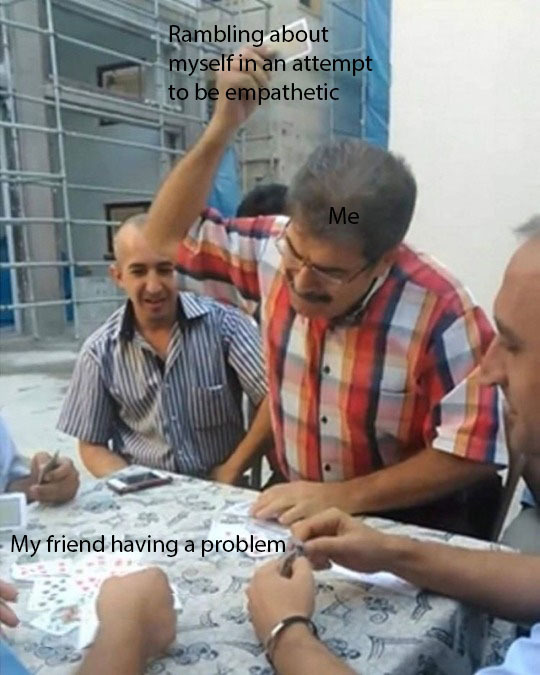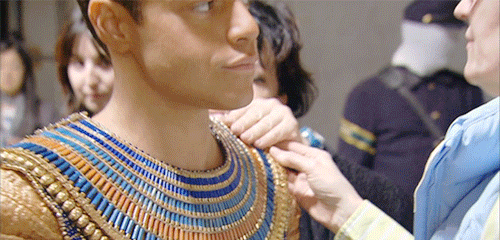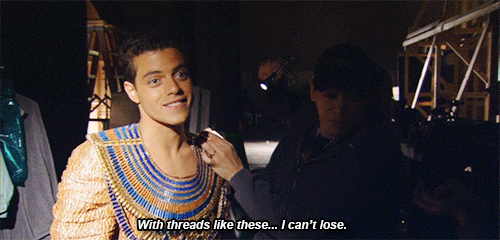Aspiring author, here to inspire new and unique ideas to help build your fantasy world! I write predominately fantasy, but I'll be tackling a paranormal romance for NaNoWriMo 2018. INTP, Aquarius, Ravenclaw, lover of mashed potato with grated cheese
Don't wanna be here? Send us removal request.
Text
If you write, you’re a writer. Don’t forget it.
877 notes
·
View notes
Text

Caring for natural (curly) hair in a setting with no access to modern hair products
So it’s the apocalypse. Your curly-haired character is on the run.They find themselves on a sudden adventure in a strange world. It’s the whatever-eth century and they’re in an environment that doesn’t exactly accommodate curly, coily haired types.
Either way, manufactured hair products are far and few between, or they’re simply not made for afro hair. Considering how your Black character handles their hair in this environment makes their circumstances more realistic and relatable.
Topics Featured in this Guide:
Hair Products found in Natural Environment
Hair Oils - Benefits and How To Extract
Protective Hair Techniques & Styles
Curly Hair Types & Hair Needs
Hair Routine Samples
Hair Straightening
FAQ
There is a writing takeaway at the end of each topic.
Brief descriptions provided after images. Contact me for fully accessible version.
Hair Products found in Natural Environment
Consider the essential needs of afro hair: water and fat.
Water (or liquid) is essential for nourishing the hair.
Fat (hair oils, creams, butters) is essential for both growth and protection.
Many curly-haired folks already use natural resources and plants to care for their hair - aka DIY hair-care. So characters concocting their own products should not be a strange concept. (I personally buy most of my natural hair products, and create my own hair masks, protein treatments, and oil blends.)
What they could use would depend on environment, time, and availability.
Hair Healthy Produce

Coconut - The all-purpose hair aid with multi forms, from oil to solid cream. Hardens in cold weather; best not to use when environment has freezing temps. Banana - Typically removed after use (hair masks, conditioners) Avocado - Applied as hair products, masks, and oils. Strawberry - Mashed and applied directly to hair or mixed with oils.
Hair Healthy Proteins, Plants, Fats

Eggs - Hardens when dry. Strong odor. Removed after use. (protein masks) Honey - Pulls moisture from air into hair - avoid during the dry winter! Shea Nuts - Made into shea butter. All-purpose hair and body care. Flaxseed - Gel made by boiling & straining flax seeds. Many DIY videos online.
Hair Healthy Herbs and Flora

Hibiscus - Sebaceous = oil-producing gland. Flowers crushed into paste or oil. Peppermint - Can rub out oil from leaves. Often used in oil form on scalp. Lavender - Often used as an oil directly applied to the scalp, or brewed as tea. Rosemary - Often combined with olive oil in use with hair; can be used alone.
More Hair Healthy Herbs and Flora

Aloe Vera - Succulent. Can extract sap directly from leaf and apply like gel. Burdock - Contains essential fatty acids and phytosterol compounds. Dandelion - Can use the roots, stems, leaves and sap for hair and skin. Rose - Common use is rose water: steep roses in boiling water to create.
Hair Healthy Products (rare or require effort to make/find)

Apple Cider Vinegar (ACV) - Diluted before use and often washed out after. Bentonite Clay - Aged volcanic ash. Combined with ACV for best activation. Oils - Key component for sealing moisture. See the next discussion. Yogurt - Base of many DIY hair products like masks and deep conditioners.
Oils for Hair
Oil is a key component to afro hair care. It nourishes and seals in moisture. Let’s discuss common hair oils and extraction methods that could, more likely, be done using homemade or historical equipment.
Oil Extraction
If oils aren’t readily available to purchase, the person would need to find or create tools to either extract the oil via pressing or heat the nuts or seeds. Consider the basic tools that have been around since ancient times. For example, the mortar and pestle. What creative use can be made out of existing tools in the person’s environment?
Hair Oils and Benefits (by potential ease to extract.)

Coconut Oil, Castor Oil, Almond Oil, Olive Oil, Avocado and Grapeseed Oil.
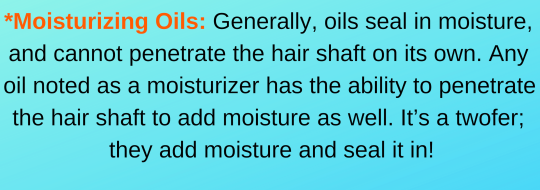
FYI: These aren’t the only methods or necessarily professional means of extraction. I also left off hair-healthy oils that seemed complicated to extract without high-grade equipment. So, this isn’t an all-inclusive list of oil or methods.
Natural Hair Product Creation
So what exactly would your character create? Here’s some natural hair products and potential main ingredients. May be used alone or combined.
Leave-in moisturizers: Plain water, coconut water, rose water
Leave-in creams: (protect/style) honey, shea, aloe vera, flaxseed, flora
Hair Cleansing Conditioner: plant water, coconut, honey, light oils
Hair Rinse/Co-wash: Apple cider vinegar, coconut, brewed tea water
Hair Masks: Mashed fruits, yogurt, proteins (eggs), clay, honey
DIY Recipe Search: Try keywords like “DIY natural hair” + “curly hair” “Afro hair” or search all natural hair products and read over the ingredient list. Try small home business and independent sellers (Like etsy)
More Sources:
15 DIY Hair Recipes for Almost Every Step in Your Regimen
14 Homemade Leave-in Conditioner Recipes
Best DIY Recipes for Naturally Curly Hair
Product Storage:
Most homemade products last everywhere from a few days - weeks
Extend the life of spoil-prone products via the cooling system in the work.
Honey does not spoil. Be mindful if it’s mixed with spoil-prone ingredients.
Oils can usually be kept at room temperature and last a long time.
Keeping a small bit of ready made supply may prove time-efficient. If impossible, they may opt to use products that don’t require much time and effort, and are worth their time to make in small batches or to potentially dispose of after.
Writing Takeaway - Natural Product/Oils Creation
With just the above compounds, I can see creative naturals being able to create styling products and moisturizing leave-ins, shampoos, conditioners and hair masks.
Do consider the following:
How simple or complex can their regimen be?
Would they rely more on protective hair styles in their situation?
What is the natural environment: what products are accessible?
How will they store products or must they make a new batch each use?
Can items be purchased by craftsmen or found in abandoned locations?
Can they afford to use edible plants if food is scarce? Food scraps and non-edible plants (like the flora) might be what they rely on.
What are their specific hair care needs? -Discussion on this later-
Natural Hair and Styling
LOC Method as base style
Moisture, sealing in the moisture, and protection are the basic needs for natural hair. The Liquid, Oil, and Cream (LOC) Method, or a variation of the steps, fulfills those basic needs. It can be treated as both a care routine and a style in itself. Personally, if my hair is not in a protective style, I use it every week.

Liquid - Liquid opens hair cuticles to allow moisture to enter hair strands.
Oil - Once cuticles are opened, the oil penetrates hair & seals in moisture.
Cream - Cream further locks in the moisture, and can be used as a styling agent as well to shape and define curls.
Should you use the “LOC method” by name in your work?
A modern setting? Sure. But don’t assume readers know what it means.
A fantasy setting? Probably not, unless earth and its terms carry over.
A historical setting? No. It is a newly coined term.
Protective Hair Styles
Protective hairstyles protect the hair by tucking ends away from the elements. For example, heat, air, hand and fabric manipulation. While not forever solutions (except maybe locs which are a permanent style) there’s many benefits to your character’s wearing them.
Benefits:
Hair growth retention
Saves time styling hair
Helps prevent damage and keep hair healthy
Ideal for any natural (the best style itself may depend on hair type)
Lessens hair’s need and dependence on moisture and hair products
Eliminates some hair maintenance activities (such as detangling)
Considerations:
Hair more difficult to wash and dry thoroughly.
Dryness (unable to access all tucked away hair to moisturize)
Styles kept in too long accumulates dead skin and product build up.
Uninstalling styles can be time consuming, and should be done gently.
Style gets frizzy from growth overtime and/or getting soaked in water.

Protective Styles Short-term (lasting days to weeks)
Afro puff(s) or bun(s)
Back Tuck or Roll and Tuck
Bantu knots
French roll
Pompadour
Roller set
Two-strand twists
Wash and go (low manipulation style)
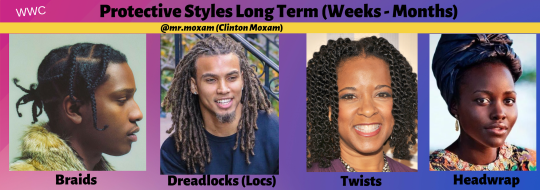
Protective Styles Long-term (lasting weeks to months+)
Braids (endless styles and patterns. Typically smaller braids last longer)
Cornrows
Dreadlocks/locs (permanent style, research the hair care)
Extensions
Flat Twists /Twists
Head wraps and hats (endless wrapping styles, colors and patterns!)
Wigs (unless glued, hair maintained underneath or often put in braids)
Writing Takeaway - Protective Hairstyles
Protective styles are an amazing way to protect the character’s hair and would very likely be the go-to for any natural in an uncertain or fast-paced environment. Just in everyday life they’re highly worn so it would especially be the case! Just remember the character needs to eventually undo whatever protective style they have installed to do some hair maintenance (washing, detangling, etc) and give their strands a rest. Also, even hair in protective styles need some attention.
Curly Hair Type and Associated Needs
Determining your hair type is important to knowing its needs. Certain ingredients work best for certain hair types. However everyone is unique and there are more factors to consider than just curl pattern (Also, most curly folks cross into a mix of hair types). There is hair thickness (width & density) and how much moisture and product your hair absorbs (porosity) to consider as well.
I will only cover curl pattern and the commonly associated needs here. To learn more about porosity, width, and density check out the FAQ under the read more.
naturallycurly.com is a great resource and is the source for the images, terms, and information provided below.

Curly Twirly (3A)
Defined loopy “S” pattern. Curls well defined and springy. Big, loose and shiny. Size: Sidewalk chalk size. Best Products: Gels and creams with light moisture and curl definition.
Curly Spirally (3B)
Well-defined, springy copious curls that range from bouncy ringlets to tight corkscrews. Size: Sharpie size. Best Products: Gels and styling creams with extra moisture and frizz control.
Curly Kinky (3C)
Voluminous, tight corkscrew curls. Either kinky or very tightly curled, with lots of strands densely packed together. The very tight curls are usually fine in texture. Size: Pencil. Best Products: Styling creams, butters, and oils. Needs gentle care.

Coily Springy (4A)
Well-defined “S” Pattern. Tight, coily, and the most fragile curls. Size: Crochet Needle or smaller.
4A Best Products & Tips: Styling creams, butters, and oils.
Clarify scalp with tea tree or jojoba oil during washes
This hair needs extra moisture and tender care
Be gentle when handling and detangling hair to avoid stress & breakage
Use thick moisturizers like mango and shea butters to maximize styles
Coily Crimpy (4B)
Less-defined “Z” Pattern. Tight, coily fragile curls. Hair bends at sharp angles.
4B Best Products & Tips: Styling creams, butters, and oils.
Add moisturizing oils before washing (pre-poo/pre-shampoo) with coconut or castor oil to help retain the natural oils in scalp
Do heat-free styles on stretched hair for maximum definition and less frizz
Air-dry hair whenever possible, or use soft cloth to gently dry.
Terry cloth will strip hair’s natural moisture and cause tension on strands
Coily Ziggly (4C)
Tight, coily, fragile curls. Curl pattern won’t clump without styling. Little to no visible definition.
4C Best Products and Tips: Styling creams, butters, and oils.
Use a cleansing conditioner with slippery elm or marshmallow root
Use a creamy humectant [like honey] as a leave-in to maximize protection
A curl defining custard or gel can stretch the coils safely for styled looks
Read the full guide here: Curly Hair Guide: What’s YOUR Curl Pattern?
Writing Takeaway - Hair type and needs
While hair type is just the start of all the intricacies of natural hair needs, it’s definitely a good start. There are other important parts to consider for real life naturals, but going off from hair type and the commonly associated needs should be enough for a story. (But read the FAQ under the read more to keep learning)
Do not get lost in the details, especially for a story that won’t need to cover tons of it. Learn enough to know what you’re talking about and can describe hair care accurately for situations that would affect hair.
Writing Takeaway - Overall:
You don’t have to be lavish in detail, but acknowledging how hair is handled here and there or in a dedicated section is thoughtful and satisfying to see included. It’s also a neutral way to show race without the use of micro-aggressions or racism. Finding the time and means for proper hair care would be a part of their life and potentially a stumbling block on the adventure, so mentioning how hair is handled during these circumstances is a fine idea.
It’s also a great means for representation.
–Mod Colette
Additional Info:
The following information will be nestled under the read more:
Hair Routine Samples - One super simple and one complex hair routine
Hair Straightening - Not ideal to maintain in survival situations, but also was a means of survival and daily living during some historical contexts
FAQ - Would any of this matter during the apocalypse? And what about natural products that attract bugs? Plus more.
Keep reading
25K notes
·
View notes
Text
horse ppl r so wild my horse friend was like “this is jenny shes the gentlest horse around shes so chill” and then jenny the horse immediately gave her a concussion
43K notes
·
View notes
Text
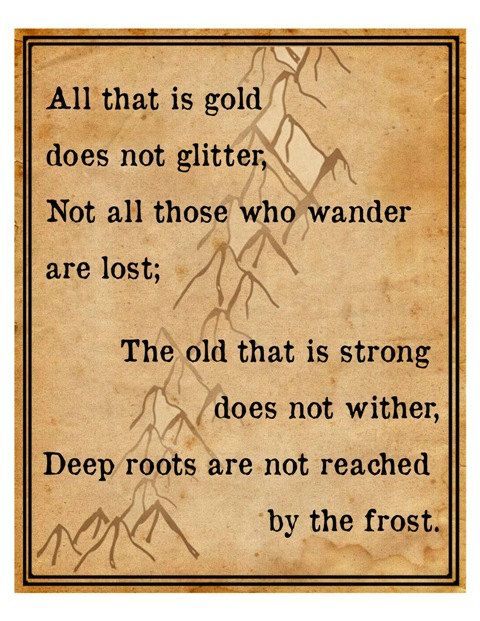
Classics are classics for a reason. No one tells a story like Tolkien.
55 notes
·
View notes
Text
I hate tumblr’s idea of ‘problematic’ characters so much.
An example of a problematic character would be a stock character of a marginalized group that’s reduced to a conglomeration of stereotypes that have a harmful effect on people from that group in the real world.
A problematic character is not a developed character with developed flaws and belief systems that people irl happen to be at odds with. It is not a character that interacts with other characters in ways that hurt them within the narrative. That’s what a story is. That’s what creating characters means. Developing a fleshed-out fictional person to serve a function within one’s narrative.
And characters that are solely mouthpieces for the creator’s own moral views and belief systems, regardless of what those views are, are bad characters, and make bad stories.
26K notes
·
View notes
Note
I wanted to write an indulgent story, where most of the characters were strong women. But as I was planning out a story, (a fantasy one where only women have magic) I realized that what a white woman wants to see in a strong woman might be different from anyone else, but I have no idea how to research that. Do you have any advice? (Sorry if this is worded awful! I hope you understand but it’s alright if you don’t.)
Writing Powerful Women of All Races
It’s great that you recognize that women’s representation is not one size fits all. What makes for good representation for white women is not the same for Women of Color.
Let’s consider how society handles women across the board:
White Women:
Traditionally, white women are treated as delicate beings, meant to be protected and romanced by men. White women are the standard of femininity and beauty. Women of Color can be attractive, too, but in a “different” way. Most positive roles for white women depict them breaking from these definitions, either embracing sexual labels or evading them by throwing out the need to be dolled-up, gentle, or in a relationship.
Even these problems come with privilege as there is this need to “dirty” oneself up and prove physical and emotional strength.
Anger in white women is seen as powerful. Anger in non-white women is either sexualized (see: the Spicy Latina) or seen as hostility and bitterness typical of their race (see: the Angry Black Woman).
White women embracing sexuality and the “Slut” role is groundbreaking. That doesn’t always translate well for WoC who are inherently seen as overly sexual and impure, and have the highest rates of sexual assault to show for it.
Black Women:
Black women are most often placed into the role of strong and independent, with an emotional and physical hardness that resists love and tenderness. They don’t need support, but they’ll be more than willing to use their backs to uplift others, no matter the gender, all and any races. Black women are rarely portrayed with classical softness or femininity. Note how Black women are so hard and impenetrable…except when it comes to helping everyone but themselves. Then they are your Mammy, warm and lovable and always there to support you, despite how much self-care they must neglect.
Asian Women:
Comparably, Asian women, especially East Asian women but other Asian women are affected too, are placed in juxtaposition to Black women. Asian women are fragile and need shielding, but that comes with a sinister dose of fetishization. They are often viewed as submissive, and are given gross comparisons to dolls as if items to place on display and control. They’re desirable, but in an “exotifc” way, and of course are not seen to have the same worth as white women.
This is often depicted in works, both old and modern: The white man falls in love with the Asian woman. After he’s had his fun, he abandons her to settle down with a white woman. The Asian woman ends her life as it is worth nothing without him.
On the flip side: Asian women are fragile and worth protecting…except when they’re not. The Dragon Lady stereotype features Asian women (Mainly East Asian) who manipulate and dominate others. This stereotype is often depicted by them dominating white men for Yellow Peril ends.
Native women:
Native women are seen as simple and animalistic, their “simpler” culture relating to “primal” needs. The narrative starts with Pocahontas, a scantily clad Disney princess who shows a white settler the wonders of the “natural” world, and continues all throughout Halloween costumes, Noble Savage, and Animalistic Natives. This very exact fetishization makes them prime targets for toxic masculinity’s view that women actively desire the more “beastly”/forcible sex, basically assuming Native women will behave like animals in heat— because that’s what society believes Natives are: a type of animal.
Women of Color:
Although this is grouping a number of women into one, they share a common thread of being exotified and fetishized. From the Spicy Latina to the brown-skinned temptress. They’re fun and sexy, and on the same hand promiscuous and impure. WoC are often portrayed as mistresses and homewreckers.
Women of Color are treated as Other, and are rarely the default. Notice in media that there’s a reluctance to call Women of Color beautiful. Words like “Striking” “Stunning” and “Exotic” are often used in its place, with an overemphasis on certain features more common to the ethnicity. And when they are more certainly called attractive, you’ll often find qualifiers such as the Dark Beauty or “Pretty for a Black Girl.”
While there is a lot of desexualizing in association with Black women (e.g. mammy), there’s another side where a Black woman’s body (see: curves and full lips) are inherently sexual to the point where even teenagers are labeled as “ho’s” and “Thots” who seek to tempt men for simply wearing shorts.
It’s no wonder Women of Color are assaulted at the highest numbers. Native American women lead in those statistics, and are at risk for sexual assault at twice the rate of others. For more stats, follow the link: (X)
A shared thread between all of these Women of Color is that, more often in not, people will not be content with these women being anything but their expected stereotypes. Also, there’s often a grumble by racist audiences when WoC are presented in relationships outside of their own race, particularly if they go anywhere near beloved white characters.
It’s time to break free of limited, dated molds and make society uncomfortable.
How do I represent these women, respectively?
I love your story concept, with all of these women having powers. Just keep in mind: what will work as positive representation for your white women may not work for Women of Color. We all have different histories that inform the struggles we have in society and what counts as proper representation.
Develop characters without applying what works for white women to all women. That is White Feminism. Intersectional feminism exists to consider Women of Color + other marginalizations and their needs as well.
Create customized representation that uplifts each women.
Develop personalities that don’t play into stereotypes. Choose powers that reflect individuality for each woman, not what is assumed about Black women, Mexican women, etc. What we hear and see in media informs our creative thought process, so your first idea may not be the most fitting one. Brainstorm! As a starting point, do opposite of the stereotypes and go from there. At the same time, find a balance to avoid extremes.
For example, the fragile Asian woman’s opposing extreme is Dragon Lady. The Strong Black Woman’s opposing extreme leads to infantilization aka making her utterly helpless.
And even then! Consider that sometimes people do have traits that may seem stereotypical. If that’s the case, it’s your job as the author to show that there’s more to them. They are human and not a label.
You can be physically strong, and still bubble with kindness, emotional softness and femininity.
Pink nail polish does not weaken a punch, or define someone as too girly or weak. It means you like pink.
You can show emotional vulnerability, fall in love and be loved in return, and still remain powerful and whole without becoming the Strong Black Women.
You can be gentle and worthy of protection while having self-worth and confidence.
You can be sensual and desirable without becoming an exotic commodity, but instead someone who is more than sexual, is in control, and 100% deserving of respect.
You can also just not be sexual, but that shouldn’t mean void of love to give and receive in return.
More reading: Stereotyped vs Nuanced Characters and Audience Perception
Research
There’s many places for you to start your research, and tons of it has been written right here on this page as well as all across the web in articles, blogs, vlogs, books etc. Seek topics on representation and intersectional feminism for the races you wish to portray. The best sources are written by the same people you’re reading about. Check out our Stereotypes & Tropes Navigation and the TVTropes List so you can recognize the displeasing ways WoC have been represented so you can avoid or amend it, and showcase people the way they want to be represented.
I also recommend you check out POC Profiles for the types of representation people who have submitted here are asking for. The WWC mods have also written on the topic in the Mod Wishlist post.
–WWC
12K notes
·
View notes
Text
America
Education System:
One Kid: *does something disruptive*
Teacher: *punishes entire class*
Real Life:
One White Guy: *slaughters 59/17/40/26/9/21/30 people with an assault rifle*
Politicians: “Eh, happens.”
90 notes
·
View notes
Text
TEN possible REASONS why your SCENE feels FLAT
Excessive focus on one character
Lacking in descriptions or pointers about setting and time
Too much dialogue
Too much exposition
Bad word choice (this one never really ends, does it?)
Lacking atmosphere
Lacking motivation/goals
Lacking tension
An abnormally slow pacing
One active character and the rest being passive
11K notes
·
View notes
Text
Writing Update
I really don’t update as much as I should, but hey, at least I’m writing during my downtime from Tumblr! My first rough draft is complete at 36,000 words. I’m an extreme underwriter so this is normal for me. Currently working on structural edits, adding a second POV because it’s needed to fill in some major holes in my plot (hopefully this will add another 30,000 or so words) and then I’ll be re-writing the whole thing and trying to pick which scenes to expand on so I can pad it out to at least 80,000 words! Editing is my favourite part, and I’m much quicker at re-writes than I am at writing the first draft so I’m slightly ahead of schedule now that I’m onto structural related stuff. Keen to get this all done by the end of the year and finally send it out to betas, it’s been a long time coming :)
12 notes
·
View notes
Text
Me, imagining a scene in my head: beautiful poetic prose that gracefully and artfully describes the scene in vivid detail, giving the reader concise imagery and beautiful wordplay to ruminate on.
Me, actually writing: The angry man throwed his chair through the window angrily and bigly. “I’m angry and pissed off.” He said because he was mad.
118K notes
·
View notes
Text
ATTENTION WRITERS
Google BetaBooks. Do it now. It’s the best damn thing EVER.

You just upload your manuscript, write out some questions for your beta readers to answer in each chapter, and invite readers to check out your book!
It’s SO easy!
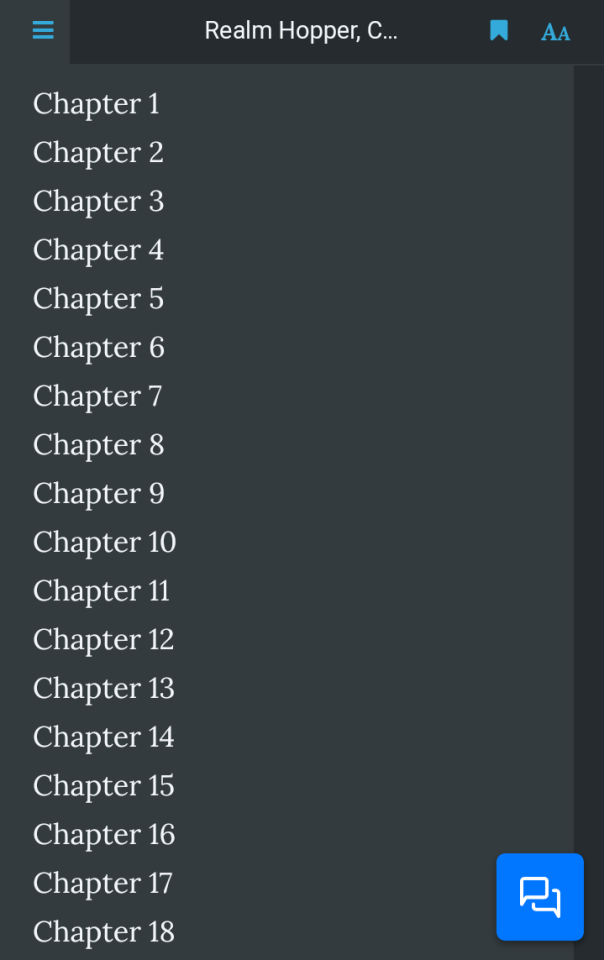
You can even track your readers! It tells you when they last read, and what chapter they read!

Your beta readers can even highlight and react to the text!!!
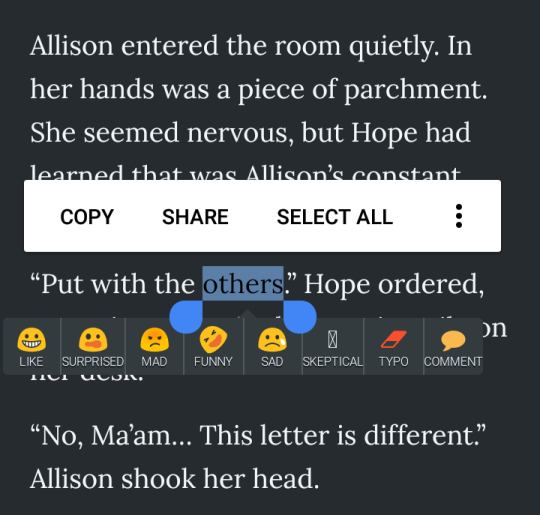
There’s also this thing where you can search the website for available readers best suited for YOUR book!
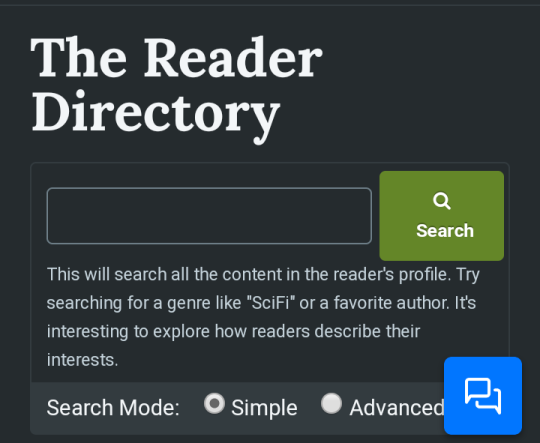
Seriously guys, BetaBooks is the most useful website in the whole world when it comes to beta reading, and… IT’S FREE.
252K notes
·
View notes
Text
I literally only have one rule in my writing and it is this:
No matter what I put my characters through, they make it. They get to make it to the end of the story and have everything work out and be ok.
Because that’s the story I need. So it’s the kind I write.
92K notes
·
View notes

